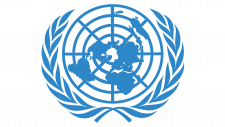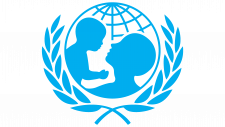Greenpeace Logo
Greenpeace is an international environmental organization known for its direct-action campaigns against environmental degradation. It was founded in Vancouver, Canada, by a group of activists including Irving Stowe, Dorothy Stowe, Ben Metcalfe, Marie Bohlen, and others. Initially, Greenpeace focused on protesting nuclear testing but soon expanded its scope to address a wide range of environmental issues like deforestation, overfishing, and climate change. Its goal is to ensure the ability of the Earth to nurture life in all its diversity.
Meaning and history
In ’71, Greenpeace sprang up in Vancouver, Canada, challenging nuclear detonations. Irving Stowe, Dorothy Stowe, Ben Metcalfe, and Marie Bohlen were among the pioneers. They took to the seas with “Phyllis Cormack,” soon rechristened “Greenpeace,” aiming to cease nuclear experiments in Alaska. Originally focusing on anti-nuclear efforts, the group’s mission quickly broadened to encompass a spectrum of environmental defense.
The ’70s saw them combat the perils of whaling, sealing, and toxic discharges. The next decade, they fronted the charge against nuclear armaments and rallied for Antarctica’s preservation. In the ’90s, they clashed with forces driving deforestation and uplifted sustainable farming practices. With the turn of the millennium, their lens zoomed in on battling climate change and advocating for clean energy. The 2010s amplified their voice against Arctic oil extraction.
Spanning 55 nations, Greenpeace has made its mark with peaceful, assertive interventions. Their strategies, sometimes contentious, often celebrated, have significantly influenced the tapestry of global eco-policies. Greenpeace stands today as a stalwart in the realm of environmental activism.
What is Greenpeace?
Greenpeace is a global environmental organization renowned for its pioneering activism. It operates worldwide to promote ecological sustainability and challenge practices harmful to nature. This group is celebrated for its non-violent, creative campaigning strategies.
1969 – 1985
The logo is a vivid, grassy green hue, evoking the essence of nature’s vitality. Rendered in a bold, organic font, the text “GREENPEACE” flows across the canvas with a lively, almost sprouting energy. Each letter stands with a slight tilt, as if swaying like leaves in a gentle breeze, symbolizing growth, harmony, and the dynamic spirit of the environmental movement. The choice of green is symbolic, representing life, renewal, and the environment—a fitting banner for an organization dedicated to protecting the Earth.
1985 – Today
The logo presents the word “GREENPEACE” in an energetic, bright lime shade, conveying a youthful zest. Unlike traditional fonts, these characters exhibit a playful irregularity, almost as if drawn by a free hand with an environmental passion. The letters lean forward, suggesting forward movement and action, a subtle nod to the organization’s proactive approach. The vibrancy of the green used here is more electric, perhaps hinting at the urgency of environmental action in contemporary times. The entire design encapsulates a spirit of activism blended with hope.













